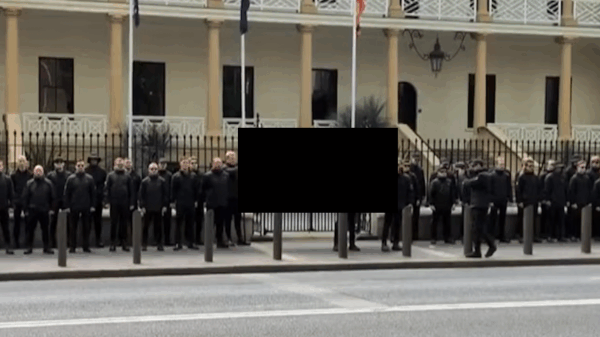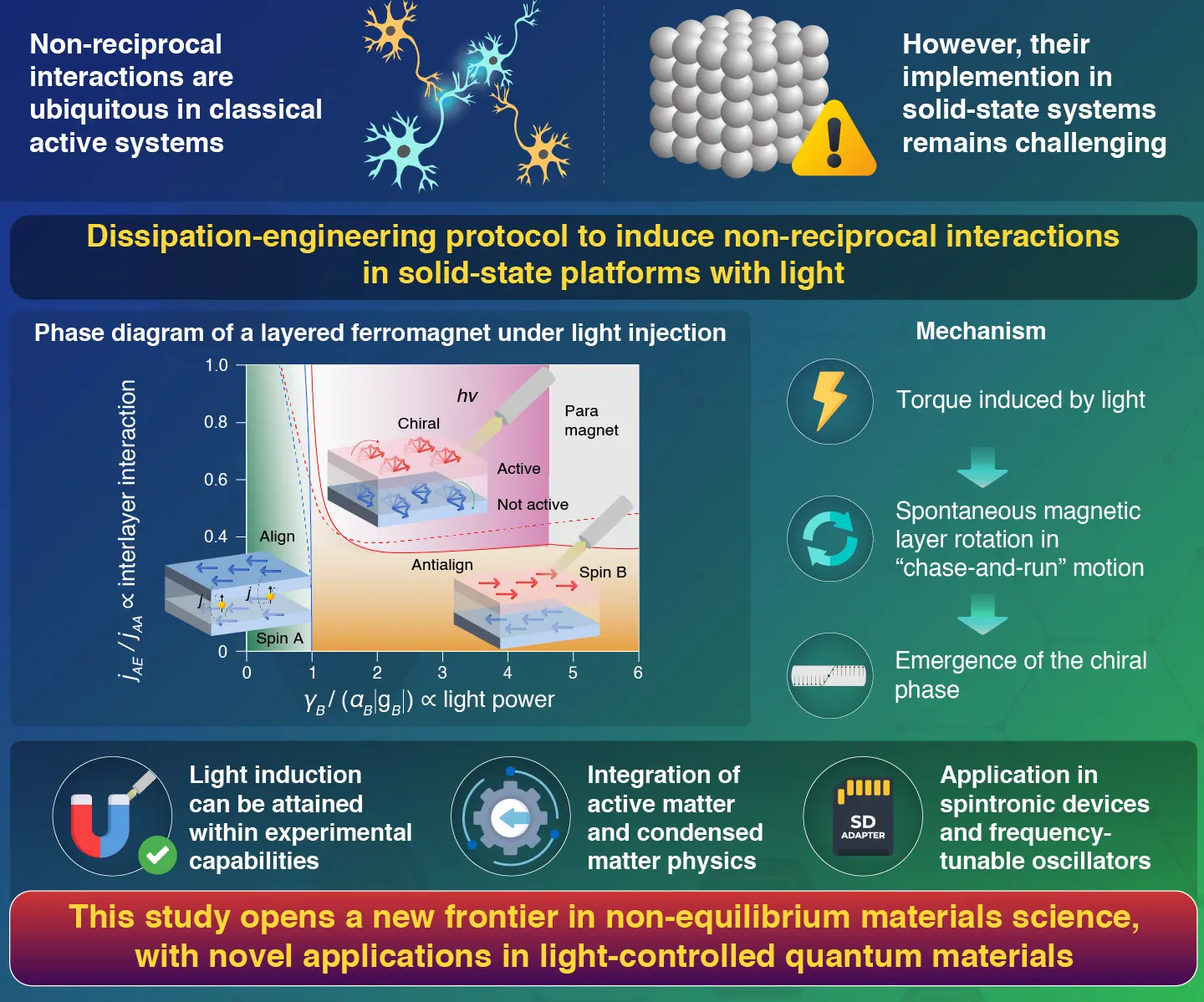A team of researchers from Japan has introduced a theoretical framework that enables the induction of non-reciprocal interactions in magnetic metals using light. This method, which effectively challenges Newton’s third law of motion, allows two magnetic layers to engage in a continuous “chase-and-run” rotation. The findings, published on September 18, 2025, in the journal Nature Communications, open new avenues in non-equilibrium materials science and potential applications in light-controlled quantum technologies.
In typical equilibrium conditions, physical systems adhere to the principle of action and reaction, striving for free energy minimization. However, non-reciprocal interactions are prevalent in non-equilibrium systems, such as biological environments, where interactions often defy this principle. For instance, the dynamics of predator-prey relationships and the functioning of neurons in the brain exhibit asymmetrical interactions. This raises an intriguing question: can similar non-reciprocal interactions be realized in solid-state electronic systems?
The research team, led by Associate Professor Ryo Hanai from the Institute of Science Tokyo, in collaboration with Associate Professor Daiki Ootsuki from Okayama University and Assistant Professor Rina Tazai from Kyoto University, has answered that question with a positive response. They proposed a novel theoretical approach to induce non-reciprocal interactions in solid-state systems through light irradiation.
“Our study proposes a general way to turn ordinary reciprocal spin interactions into non-reciprocal ones using light,” explained Hanai. The researchers highlighted the well-known Ruderman–Kittel–Kasuya–Yosida (RKKY) interaction in magnetic metals as a concrete example. By exposing the material to light at a specific frequency, they demonstrated that it could acquire a non-reciprocal character. This occurs when certain spins are selectively activated, while others remain off-resonant.
The team developed a dissipation-engineering scheme that utilizes light to selectively activate decay channels within magnetic metals. These materials, characterized by localized spins and mobile conduction electrons, engage in spin-exchange coupling. When decay channels are activated, an energy imbalance arises among different spins, resulting in non-reciprocal magnetic interactions.
In applying this scheme to a bilayer ferromagnetic system, the researchers predicted a unique non-equilibrium phase transition termed a non-reciprocal phase transition. This transition, previously introduced by one of the authors in a 2021 study, illustrates a dynamic where one magnetic layer seeks alignment with the other, while the latter aims to anti-align. This interaction causes a spontaneous and continuous rotation of magnetization, leading to a “chiral” phase defined by persistent chase-and-run dynamics.
The researchers also estimate that the light intensity required to induce these non-reciprocal phase transitions is within the capabilities of current experimental technology. “Our work not only provides a new tool for controlling quantum materials with light but also bridges concepts from active matter and condensed matter physics,” concluded Hanai.
Moreover, the implications of this research extend beyond basic science. It may pave the way for advancements in spintronic devices and frequency-tunable oscillators. Overall, the study illuminates the potential for utilizing non-reciprocal interactions in solid-state systems, with promising implications for future technologies and materials science.


































































